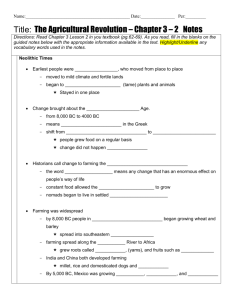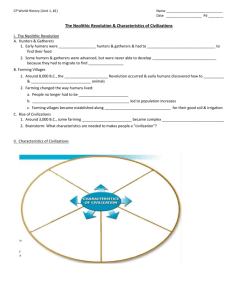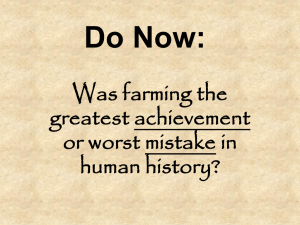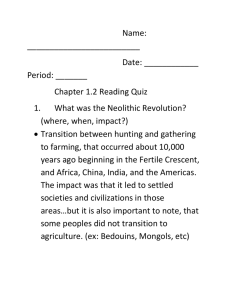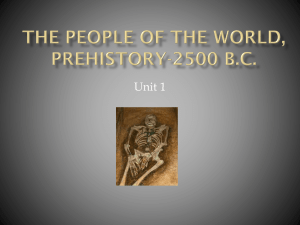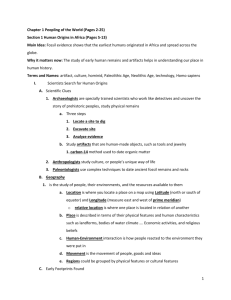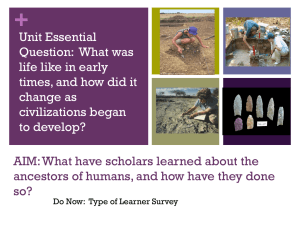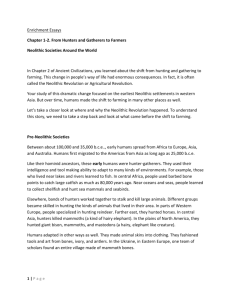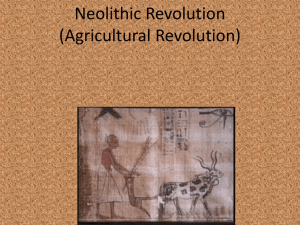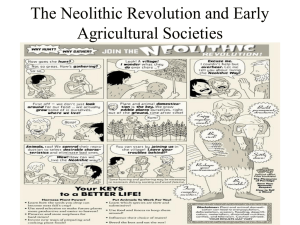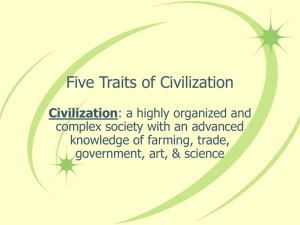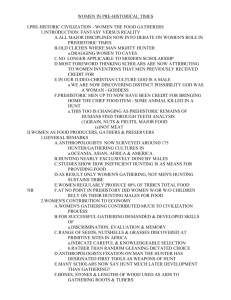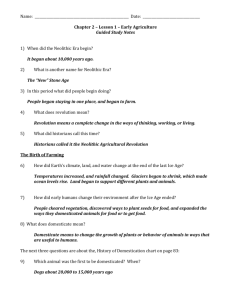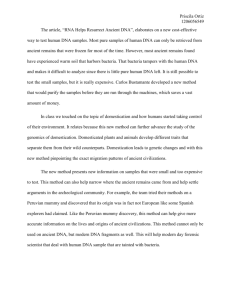The Neolithic Revolution
advertisement
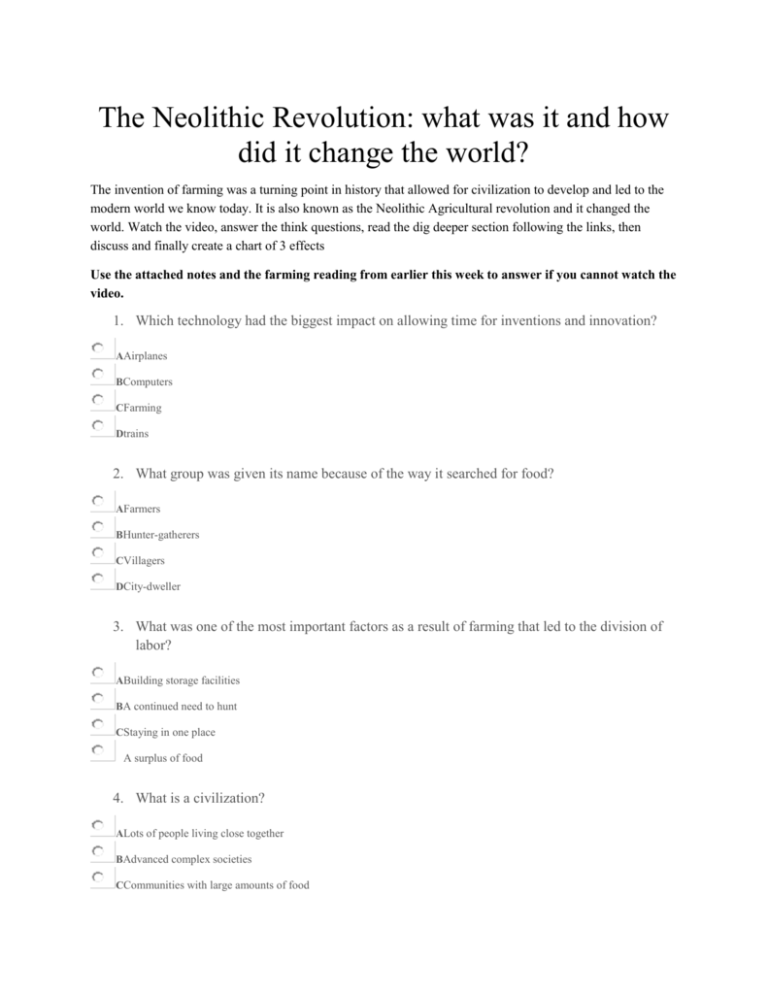
The Neolithic Revolution: what was it and how did it change the world? The invention of farming was a turning point in history that allowed for civilization to develop and led to the modern world we know today. It is also known as the Neolithic Agricultural revolution and it changed the world. Watch the video, answer the think questions, read the dig deeper section following the links, then discuss and finally create a chart of 3 effects Use the attached notes and the farming reading from earlier this week to answer if you cannot watch the video. 1. Which technology had the biggest impact on allowing time for inventions and innovation? AAirplanes BComputers CFarming Dtrains 2. What group was given its name because of the way it searched for food? AFarmers BHunter-gatherers CVillagers DCity-dweller 3. What was one of the most important factors as a result of farming that led to the division of labor? ABuilding storage facilities BA continued need to hunt CStaying in one place DA surplus of food 4. What is a civilization? ALots of people living close together BAdvanced complex societies CCommunities with large amounts of food DPlaces that produce new products and services 5. Which one of the following is not a basic feature of a civilization? AVillages BCentral governments CSystems of writing DOrganized religions 6. Agriculture, or growing plants and raising animals for food, developed in several regions of the world around the same time and changed human society forever. Explain the effects this had on the typical way of life for hunter-gatherers. 7. Too much of anything may not be good for you but not when it came to food in the Neolithic period. Growing your own food was more reliable than hunting and gathering and often led to more food than you needed. Describe the effect food surpluses had the on early farming settlements. Dig Deeper New inventions, technologies, and discoveries come with both positive and negative affects. Farming and permanent settlement by hunter-gathers was not without problems. Find out moreabout the negative effects of a sedentary lifestyle. A visual look at the origins of permanent, agricultural communities in Southwest Asia and Europe through a sequence of maps, diagrams, and photographs. This link provides an interesting look at the geographical relationship between the growth of early settlements and trade routes. The development of agriculture during the Neolithic Revolution had an enormous impact on religious ideology and the growth of highly organized societies. Learn more here. This short, animated video explains how the development of farming in Mesopotamia led to societal changes. Discussion questions 1. Why did the invention of farming lead to so much innovation and the development of complex societies? 2. Studies show that hunter gatherers have more free time, if this is so why did the invention of farming lead to so much innovation? Finally! There have been many advances throughout history that have impacted society greatly. Some advances as a result of people, events or inventions have changed the course of history and the way man lives the Neolithic Agricultural Revolution is an example of a turning point in history. In class we will begin an essay that will explain what the Neolithic Agricultural Revolution was. To prepare create a chart with at least three effects of this revolution and be prepared to describe them Notes Neolithic Age (“New Stone Age”) The last “Ice Age” ended approx. 12,000 years ago, with the withdrawal of the ice, river valleys open in temperate climates creating fertile areas that would support the growing of wild crops. About 10,000 years ago people began to develop farming as a way of life. Plants and animals that are grown or raised by people are known as “domesticated”. Wheat and barley, which had grown in the wild, were two of the first domesticated plants. People collected seeds from these plants and planted them using antlers as plows. Modern plows were invented about 6,000 years ago. Farmers also learned how to tame and breed wild sheep, goats, and pigs so they no longer had to hunt for meat. Farmers needed fertile soil and a water source so they began to find land near rivers or river valleys. Groups of farms grew into the first villages. As villages grew, they became towns. As farming methods improved, a surplus of food occurred. This led to a division of labor. People began to develop other occupations. Large towns developed into cities. Civilization was beginning. As civilizations formed, trade began between different peoples. Wars were also fought. Wars and trade led to cultural diffusion.

